Introduction to Everest Base Camp Trek Itinerary
Explore and understand the Everest Base Camp Trek itinerary in our detailed blog. Begin the best of the breathtaking journey through the majestic Himalayas with the Everest Base Camp trek in Nepal.
Our detailed itinerary will guide you through the challenging yet super rewarding adventure of reaching the base of the famous world’s highest peak- The Mount Everest!
From serene Sherpa villages to icy mountain passes, this trek offers a once-in-a-lifetime experience for all nature lovers and adventure seekers who come to Nepal for a trek journey to the Everest region.
Let’s understand the intricacies of this remarkable trek and discover the wonders that await along the way.
Table of Contents
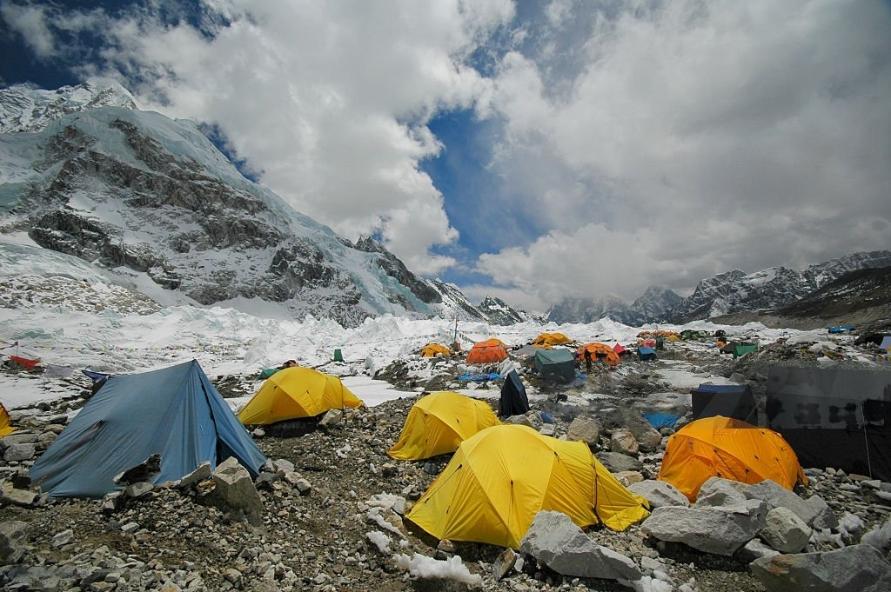
Essential Information for Everest Base Camp Trek
- Permits are needed for the Everest Base Camp trek. This ensures travelers have permission to enter the region.
- Safety is crucial as the altitude is high at 5,555 meters. Trekkers should acclimate properly.
- Dingboche and Namche Bazar are important spots for acclimatization.
- Preparing is key. This includes planning flights to Lukla Airport in Kathmandu and getting travel insurance.
- Accommodations range from teahouses to guesthouses. Guides are helpful during the trek.
- Altitude sickness is a challenge. Rest days for acclimatization are important.
- Try local food like Daal Bhat, a Nepali dish. Enjoy stunning views of the Everest mountains.
- Proper preparation, such as getting permits like TIMS permit, and watching altitude changes improve the trek experience.
Accommodation and Facilities
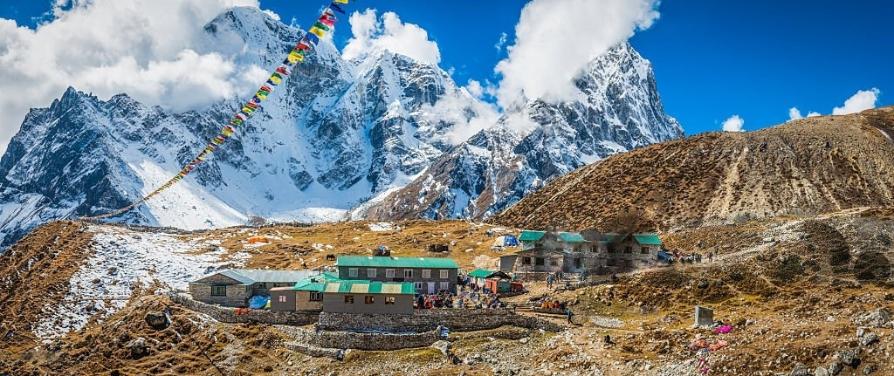
Experience the incredible journey of the Everest Base Camp trek, where you will find a variety of places to stay. Whether you prefer cozy teahouses in quaint villages or luxurious guest houses with stunning views, there’s something for everyone. You can look forward to comfy beds, hot meals, and all the basic comforts you need, with health services available along the way for peace of mind. Guides and porters are there to help you navigate the tough terrain and ensure a safe and enjoyable trip.
Permits and Safety Measures
Permits for the Everest Base Camp trek include:
Both of these permits can be obtained in Kathmandu or we at Himalayan Trekking and Tours will help you obtain them for your ease.
As you prepare for the incredible journey of the Everest Base Camp trek itinerary, remember that safety comes first. There are many ways to ensure a smooth and enjoyable trip. Take your time to acclimatize in Dingboche and Namche Bazaar, giving your body a chance to adjust to the higher altitudes and reducing the risk of altitude sickness. Our expert guides will be by your side, not only guiding you through the challenging terrain but also keeping an eye out for any health issues that may arise.
Having travel insurance with good medical coverage will give you added peace of mind. Be ready for the changes in elevation and the basic facilities in the teahouses and guesthouses along the way, where you can enjoy traditional meals like Daal Bhat to keep you energized for your adventure. The discomfort you may experience will be worth it when you see the stunning mountain views and the incredible sight of Everest.
If you need extra help, there are porters available to assist with carrying your luggage, making sure you have a comfortable and rewarding experience in the heart of the Everest region. So, begin this journey with confidence, knowing that safety measures are in place to complement the unforgettable beauty of this iconic trek.
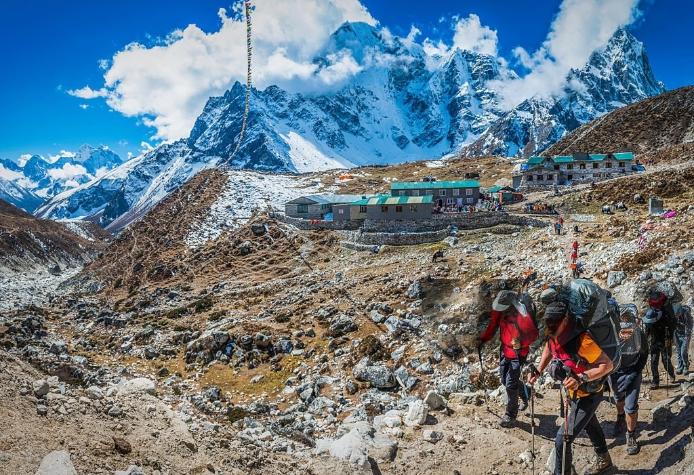
Altitude Sickness Prevention
When trekking in high altitudes, planning should be perfect. The Everest Base Camp trek itinerary should most importantly cover aspects for preventing altitude sickness.
To avoid altitude sickness:
- Follow a gradual trek itinerary for proper acclimatization.
- Spend extra days in Dingboche or Namche Bazar for acclimatization.
- Stay hydrated, eat well, and avoid alcohol.
- Hire an experienced guide for guidance on altitude sickness prevention.
Travelers should:
- Carry necessary medications after consulting a healthcare professional.
- Have appropriate insurance coverage for health emergencies.
- Acquire a TIMS permit for safety measures.
- Ensure proper accommodation in teahouses or guesthouses.
- Follow a nutritious diet rich in carbohydrates for energy.
The stunning mountain views and unique experiences make the altitude challenges worthwhile.
Best Time to Visit Everest Base Camp
While crafting the best Everest Base Camp Trek itinerary, please be advised that it also has the optimal time of the year that will give you the best of Everest Base Camp Trek in Nepal. And the best time to visit the most popular Everest Base Camp is during spring and autumn of the year. This is when the weather is at its best with clear skies, moderate temperatures, and stunning mountain views are to die for.
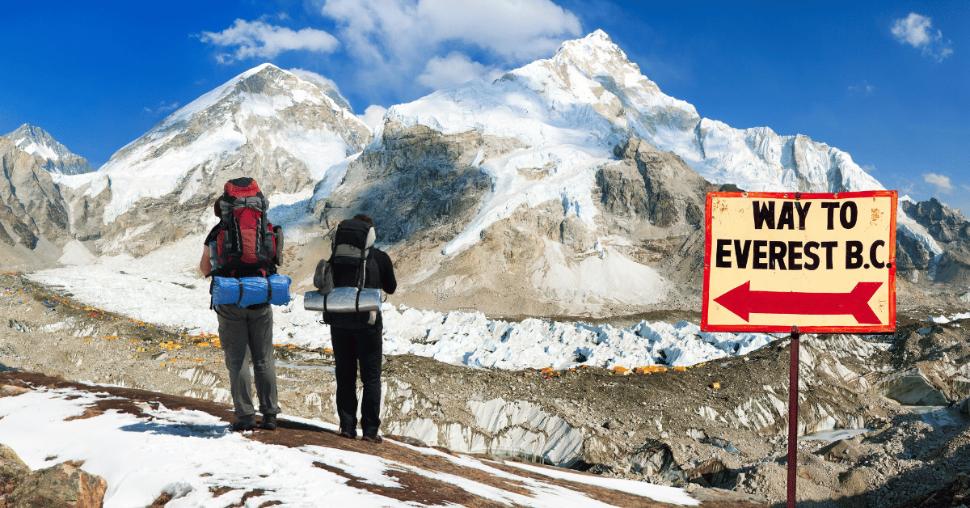
Avoid trekking in the summer monsoon season as it brings in heavy rainfall making trails slippery. Winter brings extreme cold and snowfall, making the trek more challenging.
Consider factors like weather, crowds, and accommodation availability to determine the peak season. Yes, the downfall has to be the crowd as people flock to Nepal for this ultimate adventure.
Trekking in the shoulder seasons of spring or autumn can offer a balance of good weather for a more enjoyable experience.
Travel Logistics
When it comes to Everest Base Camp Trek itinerary, those travelers heading to Everest Base Camp have different ways to reach Lukla, where the trek starts. The most common option is a flight from Kathmandu, but some prefer helicopter rides for a more scenic journey. It’s best to walk between stops like Namche Bazar, Dingboche, and Gorak Shep to fully enjoy the stunning views. To avoid altitude sickness, include acclimatization days in your trek plan and rely on local guides for help.
Porters can carry heavy bags, leaving you free to appreciate the scenery, try local dishes like Daal Bhat, and soak up the region’s culture. Enjoy the mountains, tackle challenges, get permits like the TIMS, and experience all that the Everest Base Camp trek has to offer.
Trekking Costs and Budgeting
When planning a trek to Everest Base Camp along with Everest Base Camp Trek itinerary there are typical costs to consider:
- Permits
- Accommodations in teahouses or guesthouses
- Meals
- Guides
- Porters
Budgeting effectively involves factoring in:
- Flights to Lukla or other airports for the trek
- Travel insurance
- Trekking gear
- Extra activities on the itinerary
Additional expenses may include:
- Acclimatization days in Dingboche or Namche Bazar to adjust to the altitude
- Meals and accommodations during these rest days
Trekkers should also keep in mind:
- Tipping customs for guides and porters
- Fees for TIMS permits required for the trek
The Everest Base Camp Trek itinerary offers stunning views of the mountains and unique experiences. Proper preparation and budgeting for potential challenges like altitude sickness are important for ensuring a safe and enjoyable journey in the Everest region.
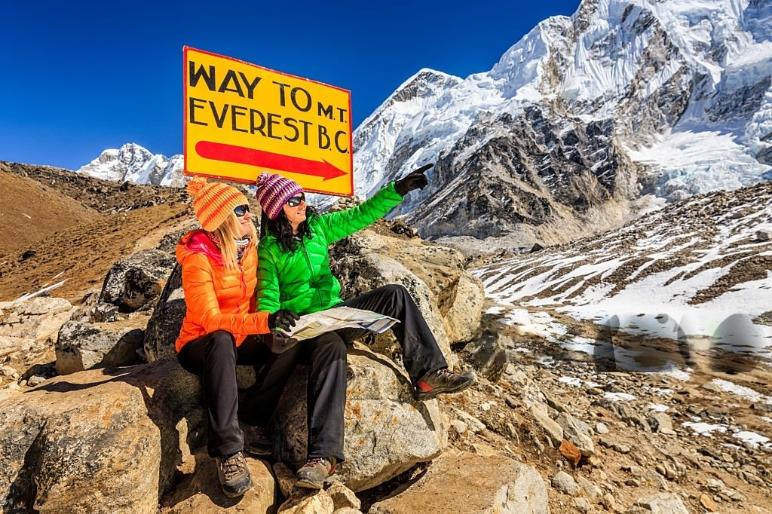
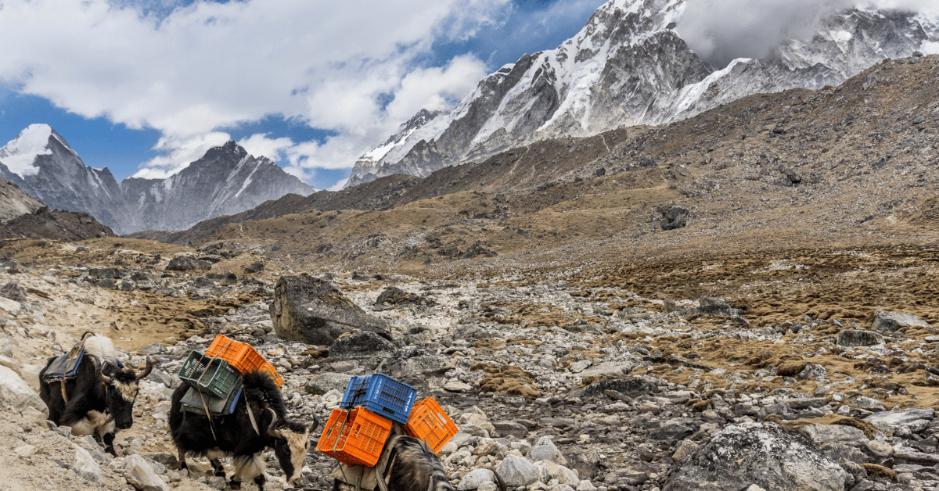
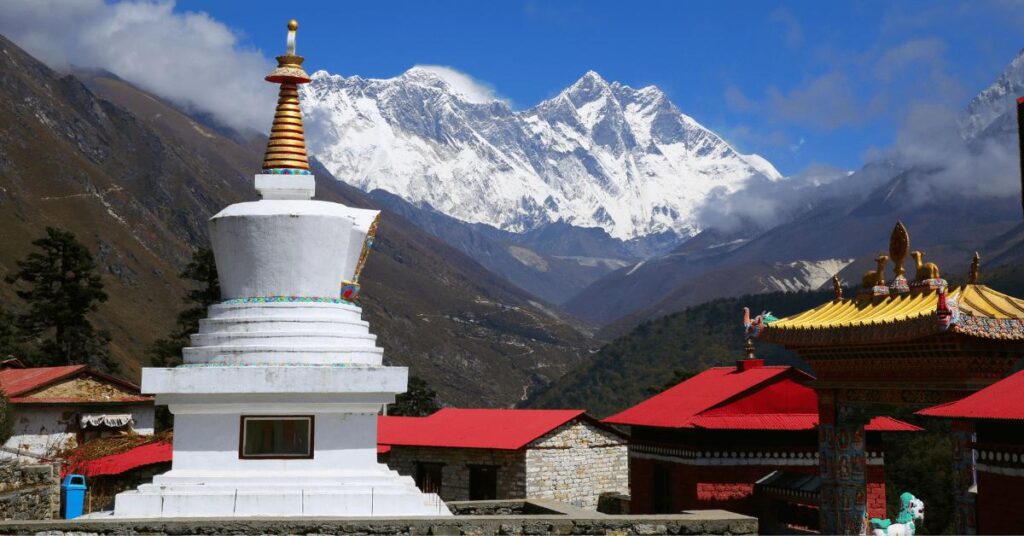
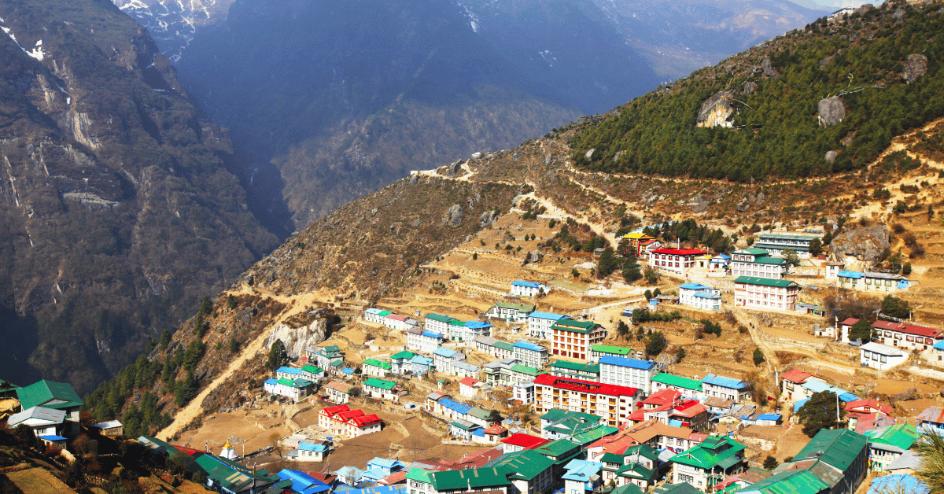
Itinerary Overview
Detailed Everest Base Camp Trek Itinerary Day by Day
The Everest Base Camp trek itinerary breaks down the journey day by day.
Each day includes activities like trekking through villages such as Dingboche, exploring Lukla (the starting point), and enjoying views of the Khumbu Pasang Lhamu mountain range.
Rest days and acclimatization periods are strategically planned to help trekkers adjust to high altitude, preventing altitude sickness.
These days are crucial for health and safety as they allow the body to adapt properly.
While acclimatizing, trekkers can visit Namche Bazar, Kathmandu, and other charming locations.
Accommodations in teahouses and guesthouses offer cozy shelter along the trail.
Preparing by getting necessary permits, having travel insurance, and hiring guides and porters is essential for a successful EBC trek.
Sampling local cuisines like Daal Bhat and soaking in the breathtaking views of the Everest region enhance the overall trekking experience.
Flight to Lukla and Trek to Monjo
On the Everest Base Camp Trek itinerary, booking a flight to Lukla is the first step of the Everest Base Camp trek. The flight from Kathmandu to Lukla is short but thrilling, with stunning views of the Himalayas. The trek officially starts in Lukla, leading trekkers on an adventure to Everest Base Camp.
Acclimatization to the increasing altitude in Dingboche is crucial when trekking from Lukla to Monjo. Trekkers need to stay hydrated, take extra rest, and avoid altitude sickness. Experienced guides assist in navigating the trail, ensuring safety, and sharing insights into the culture and history of the Everest region.
During the journey, travelers can enjoy authentic meals like Daal Bhat in teahouses while marveling at the mountains and the Khumbu Pasang Lhamu. Proper preparation, such as obtaining TIMS permits and travel insurance, is necessary for a successful Everest Base Camp trekking experience.
Acclimatization in Namche Bazar
When it comes to Everest Base Camp Trek itinerary, acclimatization too should be incorporated for the well-being on the trek. Acclimatization in Namche Bazar is crucial during the Everest Base Camp trek. The high altitude in Namche Bazar is 3,440 meters, which can be challenging due to lower oxygen levels.
To acclimate properly, trekkers should:
- Engage in gradual ascents
- Allow their bodies to adjust to the elevation
- Spend an extra day in Namche Bazar for acclimatization to avoid altitude sickness
When you take a break in Dingboche or Namche Bazaar on Everest Base Camp Trek itinerary, it’s not just a stop along the way—it’s a chance to truly experience the local culture. Dive into the lively atmosphere, absorbing the unique vibe of the place. The Everest Viewpoint will leave you in awe as you gaze at the majestic peak dominating the skyline, taking your breath away in more ways than one.
Get ready for some refreshing short hikes in the area, giving your body the gentle nudge it needs to adjust to the altitude. Remember, this day isn’t just about resting; it’s about recharging. Keep yourself hydrated, fueling up with nourishing meals like the local favorite, daal bhat, to keep your energy levels up. And don’t forget to give your body the rest it deserves, allowing it to rejuvenate so you can tackle the next part of your adventure feeling refreshed and ready.
By following these simple tips and fully enjoying your acclimatization day with the Everest Base Camp trek itinerary, you will be all set for a safe, enjoyable, and unforgettable trek in the incredible Everest region. So, take a moment to breathe it all in, explore the surroundings, and get ready for the amazing experiences that lie ahead!
Trek to Tengboche and Dingboche
Along the trek to Tengboche and Dingboche, trekkers can see beautiful views of the Everest region, such as mountains and valleys.
Trekkers get to experience local culture by staying in teahouses and talking to guides and porters. They can visit the famous Everest Viewpoint for an amazing view of the Himalayas.
Safety is important on the trek. Trekkers need permits like the TIMS permit and a good guide. They should have acclimatization days to avoid altitude sickness. Following health and safety rules, staying hydrated, and bringing necessary medications are also crucial.
To prepare for altitude changes, trekkers should do physical training before the trek. They should acclimatize slowly with rest days and gradual elevation gain. Knowing altitude sickness symptoms and taking precautions is vital. Packing right clothing and gear for different weather is key for a safe trek.
Exploring Lobuche and Gorak Shep
Lobuche and Gorak Shep have stunning views of mountains, including Everest. They are a must-see for trekkers.
For safety, it’s important to get used to the high altitude in Dingboche before going there. Activities like hiking to the Everest Viewpoint and visiting the Khumbu Pasang Lhamu Memorial are recommended.
To stay safe, hiring a guide is important for navigation and insights. Trekkers should always have their TIMS permit, passport, and trekking card.
Despite the high altitude, guesthouses in these areas offer comfortable stays and meals like dal bhat. They help trekkers stay energized.
Summit Kala Patthar and Return to Pangboche
Summiting Kala Patthar on the Everest Base Camp Trek Itinerary presents trekkers with daunting challenges, including high altitude and steep terrain. Proper acclimatization is crucial to avoid altitude sickness. Returning to Pangboche demands careful planning to navigate fatigue and altitude-related issues. Success depends on factors like weather conditions, fitness levels, and familiarity with the route. Throughout the descent, maintaining hydration, proper nutrition, and vigilant health monitoring are imperative.
Back to Namche Bazaar and Lukla
The return journey from Namche Bazaar to Lukla on the Everest Base Camp trek itinerary will have a mix of experiences and challenges.The trekking trail offers stunning views of mountains and landscapes. It provided a unique perspective of the Everest region.
However, the high altitude brought challenges. Altitude sickness will be a prevalent concern, requiring proper acclimatization and health measures
Finally, reaching Lukla brings relief and satisfaction, marking the completion of a memorable Everest Base Camp trek with a proper Everest Base Camp Trek itinerary.
Flight back to Kathmandu
Travelers who have completed the Everest Base Camp trek typically fly back to Kathmandu from Lukla Airport. It’s important to note that flight schedules may change due to weather conditions in the region.
The flight back to Kathmandu offers stunning views of mountains and valleys again. This adds a memorable touch to the trekking experience. This flight serves as a smooth transition from the trekking challenges at high altitudes to the city comforts of Kathmandu.
Accommodation in Kathmandu
Finding a place to stay in Kathmandu before or after your Everest Base Camp adventure is a piece of cake. The city has a variety of accommodations, ranging from budget-friendly guesthouses to luxurious hotels, so you’re bound to find something that suits your style.
For a lively and vibrant stay, check out the bustling neighborhoods of Thamel and Boudhanath. These areas are packed with restaurants, shops, and easy access to transportation, making your stay convenient and exciting.
In Thamel and Boudhanath, you’ll discover a mix of cozy teahouses, welcoming guesthouses, and comfortable hotels, each offering their own unique perks. Many places cater specifically to trekkers like yourself, offering valuable tips and gear rentals to make your journey smoother.
Whether you’re looking for a simple room with a backpacker feel or a luxurious retreat with all the amenities, Kathmandu has something for everyone. With a bit of online browsing, reading reviews, or talking to local experts, you’ll easily find the perfect place to call home before you set off on your trek.
FAQ
Send an Enquiry
Error: Contact form not found.
© 2025 - Himalayan Trekking and Tours (P) Ltd. All Rights Reserved.

